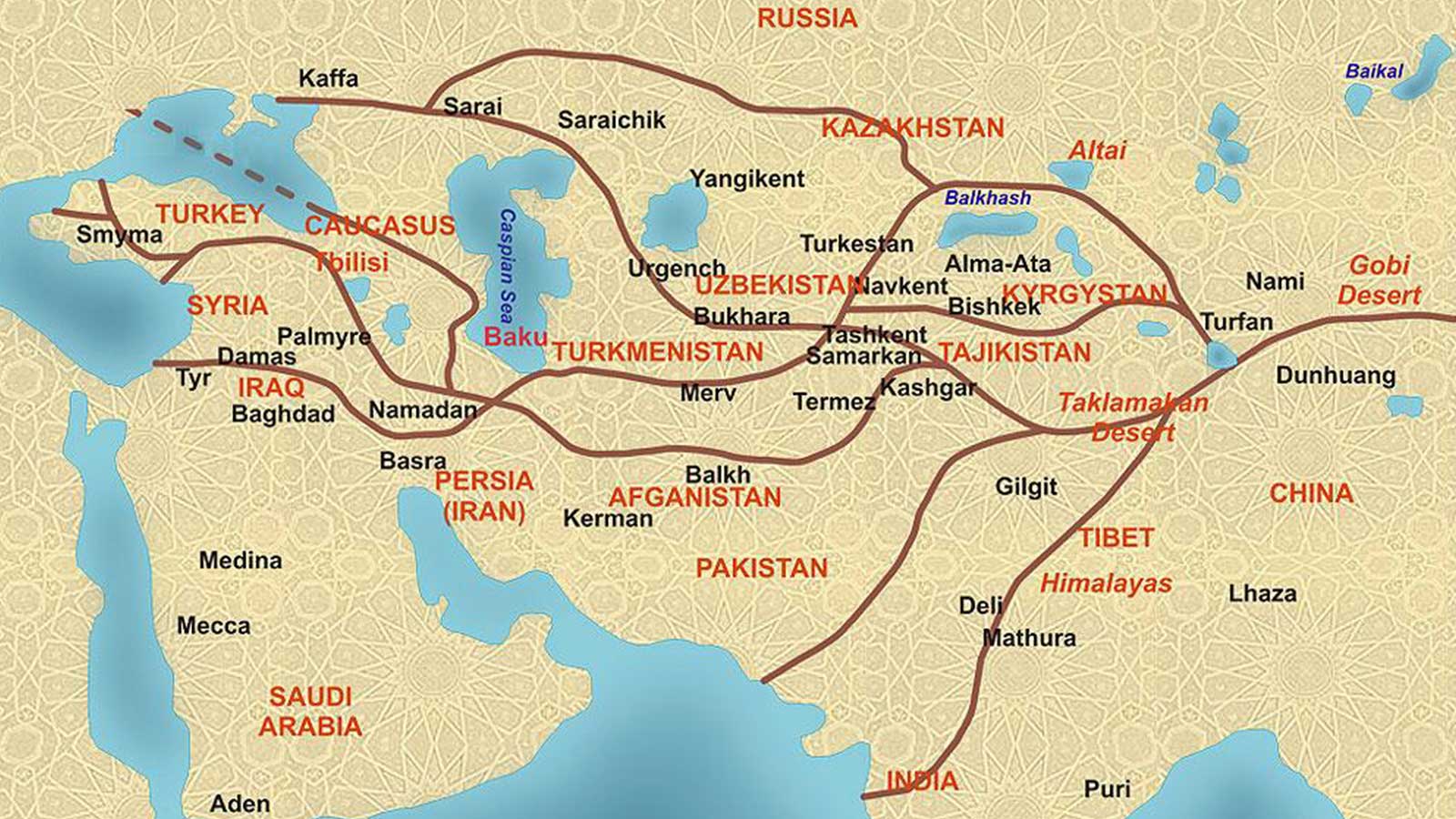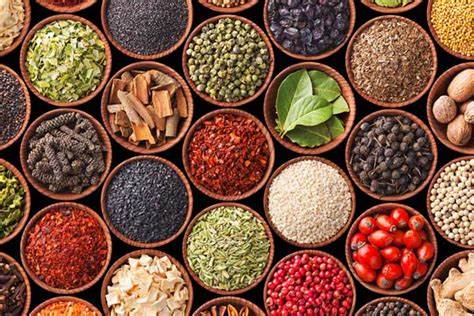Economic System - The Silk Road
Central Asia’s strategic location has been crucial in shaping the economic and cultural developments between the East and West. The region became a key hub for the exchange of goods such as wheat, barley, cotton, and fruits like grapes and pomegranates. Agriculture, along with animal products like milk, fur, leather, and meat, formed the backbone of its economy.
Beyond the exchange of physical goods, Central Asia also facilitated the movement of technologies, ideas, and cultures across vast distances. This cultural and intellectual exchange helped influence not only the region's economy but also its society, leaving a lasting impact on the civilizations that connected through these trade routes.
The Silk Road was a central route that connected present
 day
countries such China, India, Persia, the Mediterranean region and
the Arabian Peninsula. Movement of important personalities such as
merchants, diplomats, pilgrims and armies was common at that time.
The Silk Road was not just one road, rather it was series of routes
both on land and sea that flew in this region developing and
extensive trade network.
day
countries such China, India, Persia, the Mediterranean region and
the Arabian Peninsula. Movement of important personalities such as
merchants, diplomats, pilgrims and armies was common at that time.
The Silk Road was not just one road, rather it was series of routes
both on land and sea that flew in this region developing and
extensive trade network.
Items transported over the Silk Road
- Silk:
The Silk Road got its name from the large amount of silk transported from China to the Western world. As silk was highly valued and in demand, it was key to the route's success.
- Spices:

India's abundant production of spices like cinnamon, pepper, and cardamom helped connect the country to Central Asia and beyond.
- Precious metals:
Early inscriptions reveal that Rome and Persia traded valuable metals like gold, silver, and precious stones for essential goods like spices and silk.
- Ceramics and glassware:
Chinese porcelain utensils were popular examples of art and craftsmanship, while Roman glassware and Persian ceramics were also in high demand and highly valued.
- Agriculture products:
Grains, cotton, fruits, and other crops were exchanged, especially between Central Asia, India, Persia, and the Mediterranean.
Central Asia's strategic location made it an important trading hub, leading to the rise of cities like Samarkand, Bukhara, Merv, and Kiva as popular urban centers. These cities were well-positioned along key trade routes, where multilingual merchants and intermediaries facilitated both commerce and cultural exchange.
- Samarkand:
Located in modern-day Uzbekistan, sat at the crossroads of major
east-west
 and north-south trade routes. By the 14th century, it had become
a prominent center for art and science. Goods such as carpets,
fine metal works, and textiles, particularly silk, were traded
here. The city's architecture was influenced by Persia, Greece,
India, and the Mongols, reflecting its cultural diversity.
and north-south trade routes. By the 14th century, it had become
a prominent center for art and science. Goods such as carpets,
fine metal works, and textiles, particularly silk, were traded
here. The city's architecture was influenced by Persia, Greece,
India, and the Mongols, reflecting its cultural diversity.
- Bukhara: It was a major intellectual, cultural, and economic center of the Islamic world. It also played a key role in the spread of Islam, with numerous madrassas (Islamic schools) and religious institutions established. Bukhara was home to renowned poets, philosophers, and scholars.